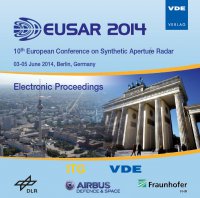Verification of the Complex Internal Calibration Approach Operated for the Sentinel-1A C-SAR Instrument
Konferenz: EUSAR 2014 - 10th European Conference on Synthetic Aperture Radar
03.06.2014 - 05.06.2014 in Berlin, Germany
Tagungsband: EUSAR 2014
Seiten: 4Sprache: EnglischTyp: PDF
Persönliche VDE-Mitglieder erhalten auf diesen Artikel 10% Rabatt
Autoren:
Tous Ramon, Nuria (Microwave and Radar Institute of the German Aerospace Center (DLR), Germany)
Inhalt:
Sentinel-1A is the first of the five European Space Agency’s (ESA) missions in the frame of the Global Monitoring for Environment and Security (GMES) program. The main objective of the Sentinel-1A mission is to ensure the continuity of Synthetic Aperture Radar (SAR) data acquisitions in C-band for global monitoring applications. Its active phased array C-Band antenna hosts 280 Transmit/Receive Modules (TRM) for each polarization channel (H and V), which control the antenna beam steering in azimuth and elevation direction. This paper shows the first verification results of the complex Sentinel-1A internal calibration approach. It is based on the acquisition of different types of calibration signals, such that the radar instrument stability can be guaranteed. Compared to previous SAR instruments, the Sentinel-1A doesn’t incorporate a calibration network, resulting in almost doubling the number of calibration signal types acquired and therefore increasing the complexity of the internal calibration approach. Furthermore, a special RF characterisation (RFC) mode is foreseen in order to assure the TRM performance. This RFC mode is based on the Pulse Coded Calibration (PCC) method, also know as PN-Gating method. Since Sentinel-1A had not been launched at the time of uploading the full paper, the evaluation results obtained from real in-orbit data could not be shown. Instead, first results of real L0-products acquired on-ground before launch are presented.


